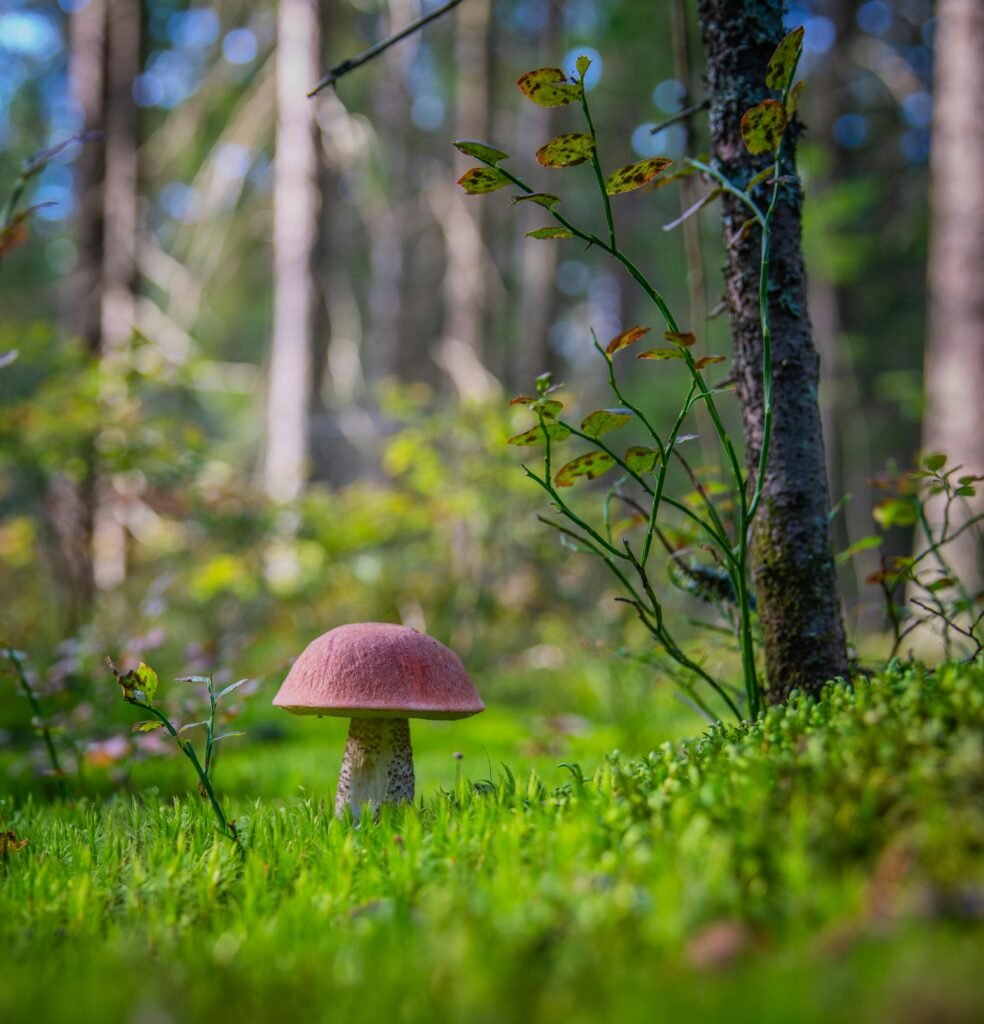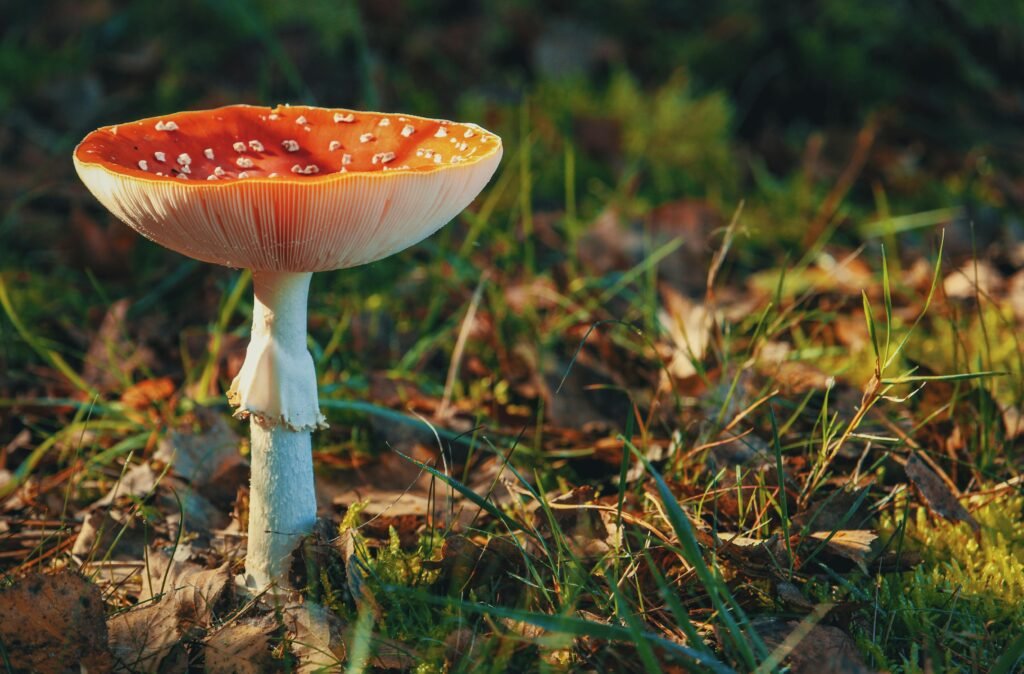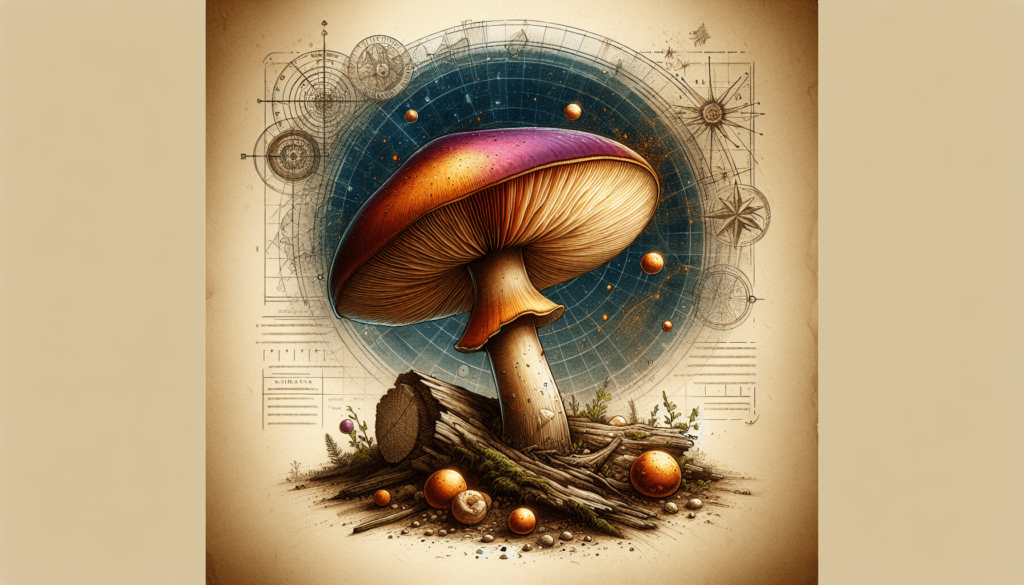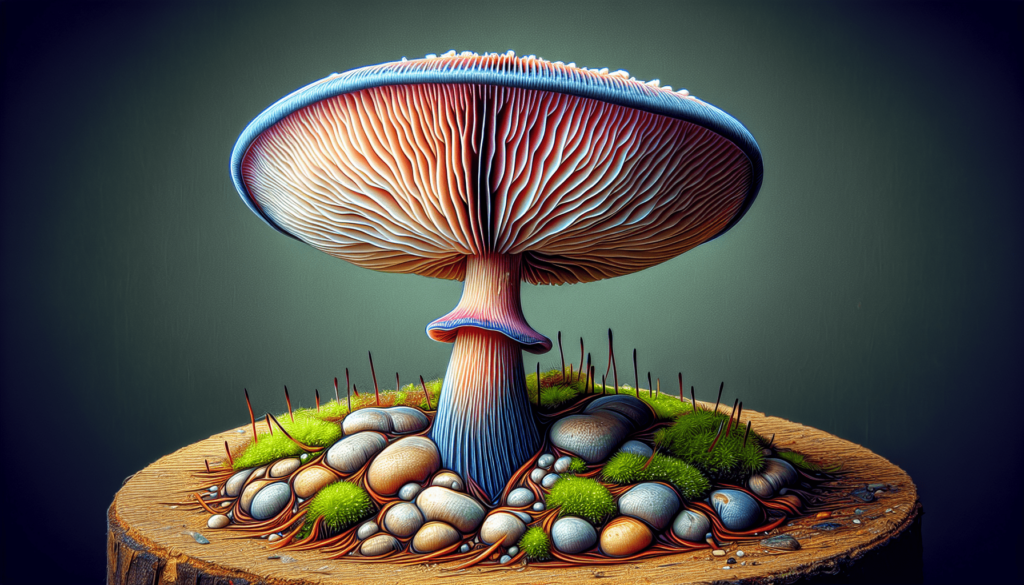Ready to explore the fascinating world of Stropharia rugosoannulata? In this informative article, you’ll be introduced to the captivating characteristics of this unique species. From its distinctive appearance to its impressive ecological role, Stropharia rugosoannulata holds a special place in the realm of fungi. Get ready to uncover the wonders of this enchanting mushroom and discover why it is cherished by both nature enthusiasts and mushroom lovers alike. So, let’s embark on an exciting journey into the world of Stropharia rugosoannulata!

Taxonomy
Kingdom: Fungi
Phylum: Basidiomycota
Class: Agaricomycetes
Order: Agaricales
Family: Strophariaceae
Genus: Stropharia
Species: rugosoannulata
Stropharia rugosoannulata, commonly known as the Wine Cap mushroom or the King Stropharia, is a fascinating fungus that belongs to the Kingdom Fungi. It falls under the Phylum Basidiomycota and the Class Agaricomycetes. Within the order Agaricales, it is classified under the family Strophariaceae. The genus Stropharia comprises various species, with rugosoannulata being one of them. By examining its taxonomy, we can begin to understand its classification and relationship to other organisms in the fungal kingdom.
Description
Cap: convex shape, smooth and shiny surface, varying in color from reddish-brown to tan
Gills: tight, white when young, turning dark purple as they mature
Stem: sturdy and cylindrical, sometimes tapering towards the base, often with a partial veil
Veil: presence of a persistent, thin, cobweb-like ring called an annulus
The physical characteristics of Stropharia rugosoannulata are notable and aid in its identification. The cap of this mushroom typically exhibits a convex shape with a smooth and shiny surface. The coloration can vary, ranging from reddish-brown to tan. As the mushroom matures, the gills undergo a transformation from a young, white color to a dark purple hue. The stem of Stropharia rugosoannulata is sturdy and cylindrical, occasionally tapering towards the base. It commonly possesses a partial veil, which is a delicate, cobweb-like ring known as an annulus. These distinct features make the Wine Cap mushroom easily identifiable in the wild.
Habitat
Native to North America and widely distributed in temperate regions
Often found growing in clusters on wood chips, straw, or decomposing plant material
Thrives in garden beds, mulched areas, and mushroom cultivation setups
Can tolerate a wide range of environmental conditions
Stropharia rugosoannulata is a native species that is widely distributed throughout North America, particularly in temperate regions. In its natural habitat, this mushroom prefers growing in tight clusters on wood chips, straw, or decomposing plant material. It displays a remarkable ability to thrive in various environments, making it adaptable to diverse settings. Whether in garden beds, mulched areas, or mushroom cultivation setups, Stropharia rugosoannulata can be found contributing to the natural cycle of decomposition. Additionally, it can endure a wide range of environmental conditions, further emphasizing its resilience and versatility.
Edibility
Considered edible and flavorful by many foragers and mushroom enthusiasts
Best consumed when young and firm, before the gills turn dark purple
Cooking is recommended to improve the texture and flavor
Some individuals may experience digestive issues when consuming large quantities
For those interested in foraging or cultivating edible mushrooms, Stropharia rugosoannulata is highly regarded. It is considered edible and flavorful by many foragers and mushroom enthusiasts. However, it is important to note that the best time to consume this mushroom is when it is young and firm, before the gills undergo the color change to dark purple. Cooking Stropharia rugosoannulata is recommended as it can enhance both the texture and flavor. It is worth mentioning that while this mushroom is generally safe for consumption, some individuals may experience digestive issues if consumed in large quantities. As with any foraging activity, it is crucial to practice responsible harvesting and proper identification to ensure a safe and enjoyable culinary experience.

Medicinal Uses
Contains bioactive compounds with potential health benefits
Traditionally used in Chinese medicine to support immune function and enhance vitality
Research suggests potential anti-inflammatory and antioxidant properties
Further studies needed to determine its full medicinal potential
Beyond its edibility, Stropharia rugosoannulata possesses bioactive compounds that have potential health benefits. In Chinese medicine, this mushroom has been traditionally used to support immune function and enhance vitality. Several studies have indicated that Stropharia rugosoannulata may possess anti-inflammatory and antioxidant properties, which could contribute to its medicinal potential. However, further research is necessary to fully explore and understand the range of therapeutic applications for this mushroom. As with any medicinal usage, it is advisable to consult with healthcare professionals or experts in mycology before incorporating Stropharia rugosoannulata into treatment plans.
Cultivation
Increasingly cultivated for personal and commercial use
Requires a substrate rich in carbon and nitrogen, such as straw or wood chips
Spawn, or mycelium-infused material, is used to inoculate the substrate
Ideal temperature range for growth is between 60-80°F (15-27°C)
The cultivation of Stropharia rugosoannulata has gained popularity both for personal and commercial purposes. This mushroom can be successfully cultivated, provided certain conditions are met. It thrives on a substrate that is rich in carbon and nitrogen, such as straw or wood chips. To initiate cultivation, spawn—a material infused with mycelium—is used to inoculate the chosen substrate. This mycelium acts as the root system of the mushroom, allowing it to colonize and grow. Temperature plays a crucial role in the cultivation process, with an ideal range for growth falling between 60-80°F (15-27°C). Through controlled cultivation, enthusiasts and farmers can sustainably harvest Stropharia rugosoannulata for continued consumption and commercial purposes.

Ecological Role
Participates in the decomposition of organic matter, contributing to nutrient cycling
Forms mycorrhizal associations with certain tree species, aiding in mutual nutrient exchange
May help improve soil structure and fertility
Supports biodiversity by creating habitats for other organisms
Stropharia rugosoannulata plays a significant ecological role in its natural environment. As a decomposer, it actively contributes to the breakdown of organic matter, aiding in nutrient cycling within ecosystems. Additionally, this mushroom forms mycorrhizal associations with certain tree species, forging a symbiotic relationship. Through these associations, Stropharia rugosoannulata facilitates mutual nutrient exchange between the tree and itself, benefiting both organisms. Moreover, the presence of this mushroom can potentially improve soil structure and fertility, further enhancing the health of ecosystems. By creating habitats for other organisms, Stropharia rugosoannulata supports biodiversity, fostering a balanced and diverse natural environment.
Similar Species
Stropharia coronilla: closely related and often mistaken for Stropharia rugosoannulata
Differences include cap color and presence of an annulus
Both species share similar habitat and growth preferences
When exploring the world of mushrooms, it is important to be aware of similar species that can be mistaken for Stropharia rugosoannulata. One such species is Stropharia coronilla, which is closely related to Stropharia rugosoannulata and often misidentified. While both species share similar habitats and growth preferences, there are distinct differences to help differentiate them. Stropharia coronilla exhibits variations in cap coloration and lacks the persistent, cobweb-like ring (annulus) that is present in Stropharia rugosoannulata. By understanding these dissimilarities, it becomes easier to accurately identify and appreciate the unique characteristics of each species.

Potential Confusion with Poisonous Look-alikes
Not commonly confused with highly toxic mushroom species
However, beginners should always exercise caution
Proper identification and consultation with an experienced mycologist is recommended
While Stropharia rugosoannulata is not typically mistaken for highly toxic mushroom species, it is always essential for beginners to exercise caution when foraging. It is crucial to develop proper identification skills and seek guidance from experienced mycologists or mushroom experts. Engaging in responsible foraging practices, such as cross-referencing field guides and attending mushroom identification workshops, can significantly reduce the risk of misidentifying potentially hazardous mushrooms. By cultivating a comprehensive understanding of Stropharia rugosoannulata and its distinct features, individuals can confidently enjoy the rewards of foraging while ensuring their safety.
Conclusion
Stropharia rugosoannulata is a widespread and valuable mushroom species
Appreciated for its edible qualities, potential medicinal uses, and ecological roles
Cultivation is increasingly popular, allowing for sustainable harvesting
Proper identification and responsible foraging practices are essential for a safe and enjoyable experience
In summary, Stropharia rugosoannulata is a remarkable mushroom that holds significance in various domains. Its wide distribution and adaptability make it a valuable species within the fungal kingdom. Appreciated for its edible qualities, Stropharia rugosoannulata delivers a flavorful and enjoyable culinary experience. Its potential medicinal uses, supported by research, showcase the promising bioactive compounds within this mushroom. Ecologically, Stropharia rugosoannulata contributes to nutrient cycling, mycorrhizal associations, and habitat creation, all of which enhance biodiversity and ecosystem health. With increasing cultivation efforts, sustainable harvesting becomes possible, ensuring a continued supply for culinary and commercial purposes. To fully appreciate the benefits of Stropharia rugosoannulata, proper identification and responsible foraging practices remain crucial. By understanding its taxonomy, description, habitats, and potential confusion with other species, individuals can confidently and safely explore the world of Stropharia rugosoannulata and unlock its vast potential.

